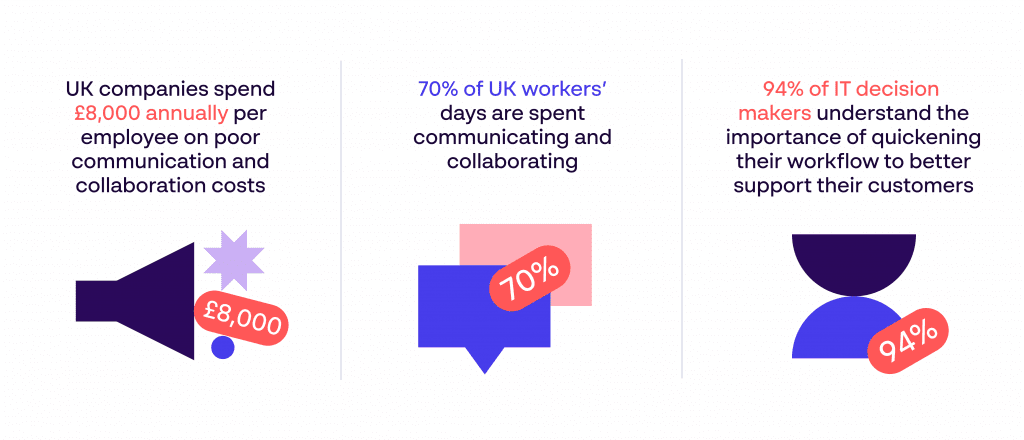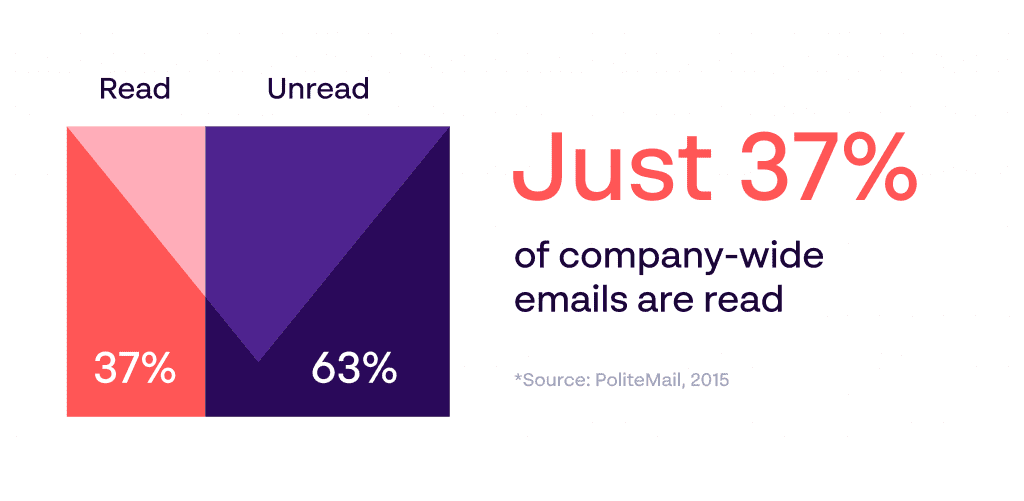This content has been automatically translated and may include minor variations.
There is a significant amount of value in your communications – but how do you determine how much?
Identifying the key corporate communication metrics that an organisation should be judged against has been an ongoing challenge across the marketing industry. During a PRWeek Breakfast Briefing in late 2018, Allison Spray, Head of Data and Insight at Hill & Knowlton Strategies, explained the situation quite clearly:
“I’ve worked across a lot of different (marketing) disciplines, particularly on the media-buying side, and when I look at how drastically they’ve moved in the past ten years compared to us, that’s when the gulf really becomes apparent”
While she was specifically referring to PR, this is arguably a constant across all forms of corporate communications. This is how your organisation communicates with its various audiences both internally and externally, from your employees and stakeholders to customers and the general public.
The days of evaluating the effectiveness of different communication systems on column inches and Advertising Value Equivalent (AVE) no longer apply. But, it is still highly important that you are using meaningful corporate communications metrics to track its usefulness to your brand.
Why is knowing your communication metrics important?

But what is less emphasised is the importance of tracking how effectively it is fulfilling those goals, or how substantial the cost of poor communications can truly be. A survey of 400 multinational corporations in the US and the UK revealed that communication barriers cost an average of $64.2m in lost productivity.
Unquestionably, that is money that can be put to better use, as well as an illustration of the hours wasted by employees as a result of ineffective communications. In fact, according to research by Mitel, ineffective communication amounts to 1 DAY of working time lost per week. Their report also revealed that:

In addition, a survey by Hollinger Scott revealed that 41% of teams don’t have any means to track their corporate communications in relation to user activity and how much content is being seen and interacted with.
Just having a corporate communications strategy in place is not enough – measuring the effectiveness of communications is essential to ensure that this monumental part of your day-to-day life is functioning as efficiently as possible.
Why is measuring communications such a challenge?
While the ability to measure effective communication is crucial, that doesn’t mean that a settled way to track these metrics has been fixed in place. The Barcelona Principles have attempted to offer a benchmark for measuring communications, but it is not comprehensive.
That is largely because the aims of communications aren’t exactly definitive – it is all about brand perception. And while communications metrics like email opens, event sign-ups and the columns you receive in an industry magazine can indicate your strategy is delivering results, it is difficult to be certain.
This has led some to argue the necessity of tracking internal communication metrics in particular, as this is above all a role designed to drive behaviors to fulfill business outcomes. That can be difficult to quantify through typical marketing KPIs.
Other potential barriers facing teams struggling to track their corporate communications metrics include:
- Not having access to the right tools to measure relevant data
- Fear that bad metrics will put communicators’ job security at risk, even if these numbers aren’t directly caused by their actions
- Lack of time/resources – communicators cover so much ground that tracking results can feel like another burden on an already stressful job
But what corporate communications metrics and KPIs will signify if you’re reaching your targets or falling below expectations? As noted earlier, this is still a question which is yet to have a fixed answer.
Fundamentally, how you choose to measure effective communication within your organisation will depend on your specific business objectives. An effective approach to judging the quality of your communications is to place them in the context of what your business and its partners are looking for and judge against those, using these to identify any issues and barriers to these aims.
This places the measuring of communications at the doorstep of your senior leadership team – when both key executives and your communications team are in-sync in terms of what they intend to accomplish, it makes the job of tracking metrics far more straightforward.
It could be that your company wants to foster a stronger sense of brand identity within your workforce? Or that there’s less dependence on email with a stronger emphasis on your intranet or social networking tools? It will depend on what you are seeking from your communications efforts.
However, we can safely say that in order to effectively assess these, there is a mix of quantitative and qualitative corporate communication metrics you should incorporate into your analyses.
Essential key performance indicators for corporate communications
- Employee awareness and feedback
- Open, read and click rates
- Page visits and logins
- Peak times of staff intranet use
- Corporate video views
- Mobile usage levels
- Platform adoption rates
- Employee advocacy
- Employee turnover
- Event and benefit sign-ups
- Media outreach and digital trends
- Speed and effectiveness of crisis communications
1. Employee awareness and feedback
Did you know that 74% of employees feel they miss out on company news and information? Establishing how aware your teams are to the communications processes you have in place or how knowledgeable they are of the content you’re putting out there is a critical internal communication metric to track.
Establish a benchmark and then survey and talk to your employees to gain a consensus on whether they’re receiving the communications you are sending out, and if not, why? By measuring awareness and interest, you get an understanding of where your communications might be lacking.
2. Open, read and click rates
Plus, incorporate elements like event sign-ups and other links onto your communications to help determine if employees are actively engaging with them. While they might open an email, this will allow you to track if people are following the actions you’ve suggested and truly engaging with your content.
While on their own these do not paint a complete picture of the effectiveness of your approach to communications, the open, read and click rates of your emails and other messages will illustrate if people are paying attention to what you have to say. With the average read-rate of company-wide emails sitting at around 37%, this will provide an indicator of the success of your internal communications.

3. Page visits and logins
Similar to email opens, reads and clicks, used as standalone corporate communications metrics visits to a company-wide intranet can only tell you so much. But tracking unique page views, how often employees log in to the platform, how long they stay on there, and so on, provides an indication of how valuable your staff view these and if a change of approach is required. Remember – only 13% of employees strongly agree that their company communicates effectively with them…

4. Peak times of staff intranet times
Alongside how often your employees are logging into and engaging with your intranet or shared company platform, it can also be valuable to identify the peak times they are using it. Knowing the times of highest traffic will indicate when’s the right time to schedule company announcements or news updates in the hope of getting the greatest engagement.
Across all forms of marketing, timing is essential – to attract the largest possible audience to your internal communications, it benefits you to release them when they’re most active on your platforms.
5. Corporate video views
Another quantitative measure. If you have one or several corporate videos on your site or as part of your communications, following their play-rate and view counts will inform you as to whether they are resonating with and appealing to your audiences. Gathering this and other data at regular intervals (weekly, monthly, quarterly, etc.) will allow you to spot any trends and react to these in a timely fashion to protect your ROI.
6. Mobile usage levels
As well as how often employees and customers are engaging with your communications content, it’s important to determine where they’re coming from. With Brits spending in excess of two-and-a-half hours every day on their smartphones, knowing if they’re following this trend when engaging with your materials will highlight whether a mobile-first approach will appeal to your audiences more than focusing on an alternate avenue.

7. Platform adoption rates
If you’ve recently introduced a new social app for your employees, how many have downloaded it? Consider this if you’ve also introduced an employee recognition programme – how many people have actually signed up? Checking the adoption rates of these platforms designed to improve productivity and the effectiveness of communications will give an indication as to whether they’re actually providing a return, and also how well your communications are received overall.
It might mean that an alternative approach is required, or that the processes involved in setting up this platform are too complex or time-consuming for employees to get involved with. Again, it’s about identifying any issues early and reacting to them appropriately.
8. Employee advocacy
The power of transforming your employees into impassioned brand advocates cannot be overstated – it is a natural, sociable way to connect audiences to your company’s identity. Tracking how often your content is being shared, liked, and spread out by your team members is a powerful demonstrator of how connected they feel to your brand, as well as how familiar they are with your various communication platforms.
Identifying any issues with these corporate communication metrics will inform where, when and how you post content going forward, and hopefully lead to you utilising this powerful resource to its fullest.
9. Employee turnover
People who maintain a strong bond with their place of work are unlikely to want to leave it. And, judging how one of the primary reasons employees depart is due to a poor relationship with their manager, it stands to reason that your employee turnover numbers will be a useful communication KPI. The more turnover you endure, the less likely your staff are engaged with your company-wide communications.
When employees feel informed and understand what is going on in their company, they feel a deeper level of respect and trust towards it. This leads to better productivity, efficiency and achievement. If your communications are not as effective as they could be, you stand to miss out on those benefits.

10. Event and benefit sign-ups
If your company has a benefits programme or regularly holds workplace events, tracking how many of your team has signed up to these, and how quickly they do so, will provide insight into how effective your communications are. If the benefit is useful and doesn’t require a great deal of employee effort to get involved with, if enrolments are still low, this corporate communications metric can illustrate your current approach isn’t reaching people, or engaging them properly.
11. Media outreach and digital trends
Both the number of press releases and other external communications your company is sending out and the response to them can be a strong indicator of how effective they are. If they are getting into well-respected publications and websites with high domain authority, you will gain a clearer sense of how strong your content is on these platforms.
Furthermore, whether it’s the trending hashtags page on Twitter or you’re featured on Google Trends, that is another (if not, aspirational) way to determine if your communications are having the desired impact.
12. Speed of crisis communications
Finally, often the effective measure of your communications team is how quickly they can respond and handle difficult situations. Crisis communications form a central component of your overall communications strategy, and so it’s crucial you are tracking how quickly this content is reaching your audiences, and if their response to this is as you’d hope for.
Staying on top of your corporate communications metrics
This is just an indication of some of the communication KPIs that you should refer to when you are judging how the value of your communications to your organisation. The all-encompassing nature of these messages and their relationships with your various audiences, both within and outside your company, places a high priority on whether these are working as effectively and efficiently as possible.
The bottom line is that the quality of your corporate comms directly affects your bottom line. The question is, can you afford to NOT be tracking the impact your corporate communications strategy is having? Hopefully, these 9 examples will help to point you in the right direction when figuring out how solid your approach is.

